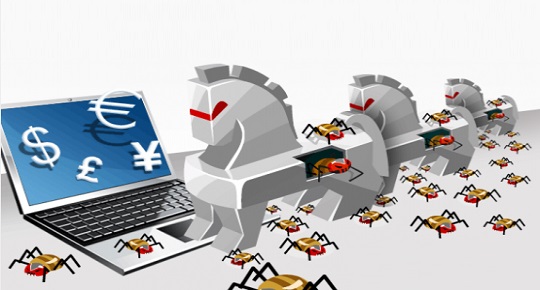As its name says, this is the perfect example of what these viruses are: In ancient times the Greeks built a giant wooden horse and gave it to the Trojans as a gift of peace. Inside the Trojan horse hid Greek warriors, who tricked the Trojans into making way for them to the city.
Now in today’s digital age where hackers are doing something very similar. On one level, they are giving you the gift of free software. Below that level, however, they are waiting for the opportunity to take control of their computer.
Trojan horse is a type of malware that often disguises itself as legitimate software. Cybercriminals and hackers can use Trojans to try to access users’ systems. Generally, users are tricked by some form of social engineering into loading and running Trojans on their systems. Once activated, Trojans allow cybercriminals to spy on you, steal your confidential information, and gain backdoor access to your system.
These actions can include:

▸Delete data
▸Lock data
▸Modify data
▸Copy data
▸Disrupt the operation of computers or computer networks
▸Shutting down or restarting the computer.
▸System monitoring and follow-up of user actions.
▸Capture of images or videos through the webcam, if you have.
Currently, and given the popularity of mobile devices and tablets, it is these platforms (especially those with less control in their application market) that are attracting growing interest among developers of this type of malware. Given the personal use of these devices, the actions that an attacker can perform on these devices include those already described, plus other specific ones derived from the private nature of the information stored on these platforms. Some examples are:
▸Capture of incoming and outgoing messages from messaging applications.
▸Call log capture.
▸Access and modification of contacts in the agenda.
▸Ability to make calls and send text messages.
▸Knowledge of the geographical position of the device through GPS.
Most common ways to get infected with Trojans
Most Trojan infections occur when running a Trojan-infected program. These programs can be of any type, from installers to photo slideshows. When you run the program, it is displayed and performs the tasks normally, but in the background and at the same time the Trojan is installed. The infection process is not visible to the user as no windows or alerts of any kind are displayed, so avoiding the infection of a Trojan is difficult. Some of the most common forms of infection are:
▸Download programs from P2P networks.
▸Not having any kind of protection software
▸Connect an infected external device to your computer.
▸Attachments in emails and files sent by instant messaging.
▸Web pages that contain executable content
Remember to always be prepared and surf the internet with caution to avoid all these problems as much as possible.



